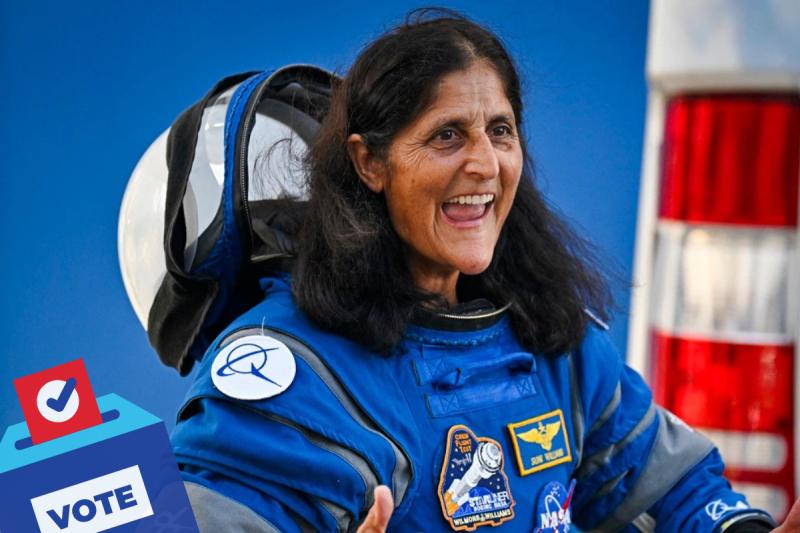
- agastya9
- 30 Oct 2024 05:18 AM
- Sunita Williams, US Presedential Elections, Kamala Harris, DonaldTrump, Astronut, NASA
NASA astronaut Sunita Williams is making history as she prepares to vote in the upcoming U.S. Presidential election from the International Space Station (ISS), where she is currently serving as commander. Williams will cast her ballot approximately 400 kilometers above Earth, joining a select group of astronauts who have exercised their right to vote from space.
The ability for astronauts to vote while in orbit has been available since 1997 when Texas passed legislation allowing NASA crew members to vote from space. Following in the footsteps of astronauts like David Wolf, the first American to vote from space aboard the Mir Space Station, and Kate Rubins, who voted from the ISS in 2020, Williams will become one of the few space-based voters.
Williams will follow a process similar to that used by Americans voting abroad, with specific adaptations for her unique location. First, she will complete a Federal Post Card Application to request an absentee ballot. Once approved, the electronic ballot will be sent to her aboard the ISS, where she will securely fill it out using NASA’s computer systems.
The transmission of Williams’ vote is made possible by NASA’s advanced Space Communication and Navigation (SCaN) Program. Her completed ballot will travel through NASA's Near Space Network via the Tracking and Data Relay Satellite System. From space, the ballot will be transmitted to a ground antenna at NASA’s White Sands Test Facility in New Mexico, before being securely relayed to Mission Control at Johnson Space Center in Houston. There, the encrypted ballot will be directed to the appropriate county clerk, ensuring that only Williams and the county clerk have access to the final vote for complete security.
This voting process demonstrates NASA’s dedication to supporting astronauts’ connection to civic responsibilities, even during extended missions. It also showcases the cutting-edge communication systems that make these long-distance voting opportunities possible, underscoring the ongoing link between astronauts and their lives on Earth, regardless of where their missions may take them.






























